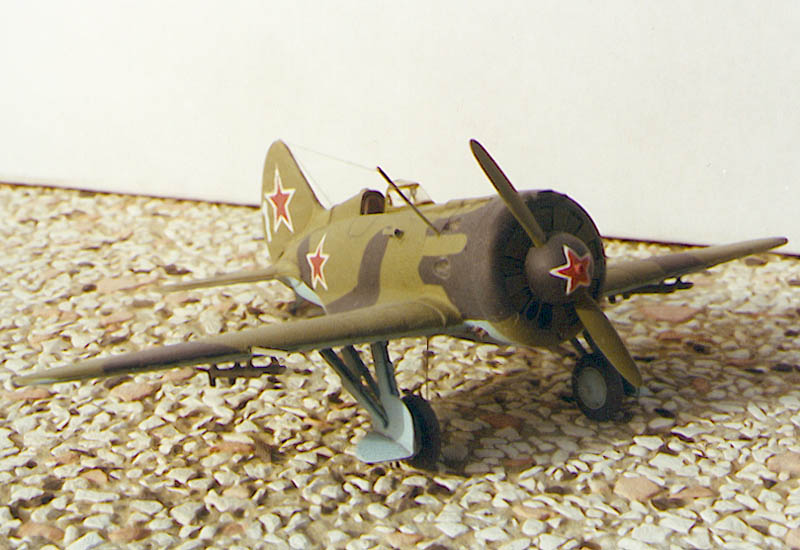
|
Model by Massimo Tessitori |
|
|
|

This I-16 was obtained from the Hasegawa type 24 kit, 1/72.
This model has some good characteristics, as the clean moulding and
pleasant building up, but it has some heavy defects too.
The most visible defect is the wing platform, that is a bit too rastremated,
even if not as strongly as on the older Revell kit. As a result, the wings
appear a bit too pointed.
One can choose to ignore this, but I preferred to correct the problem.
I had to:
The main wheel bay is too flat, it has to be opened; a new bottom will
be added with plasticard, glued and painted with a thick layer of paint
in such way to be filleted to the sidewalls; a nervure and a small hole
will be the only details required.
The landing gear doors have to be thinned, and their nervures built
with sprue.
The exhaust stacks are not too satisfying, I preferred to remove them,
drill the fuselage and install new pipes made by plastic tube. The upper
left and both lower recesses have two pipes each, the other recessed have
only one pipe.
The air outlet of the oil radiator under the nose has to be modified;
it should have a strongly oblique outlet.
Some details of the cockpit have to be added, the gunsight in particular.
The guns and Venturi holes were made by a small drill tool.
The pitot can be replaced by a metallic probe to increase strength.
The attachments for the camera gun have to be added on the fuselage
back.
Well, these are the works required by building the model as the same
version given on the box (nominally type 24).
But I decided to build my model as a type 29, the last type in production,
armed with three machine guns on the engine cowling
The required works were:
The decals are from scrap, and the red star on the spinner was painted
by brush.
The painting technique was by hand brush, with panel lines darkened
with a mix of acrilic black, alcohol and gloss trasparent. Some drybrushing
was made on the details of the landing gear and the cockpit. The metallic
parts were painted with a slightly lighter shade of green.
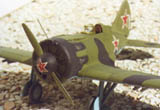 |
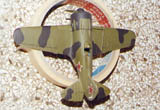 |
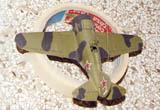 |
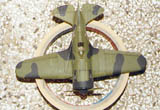 |
 |
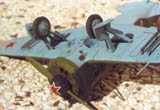 |
Main references for this model:
Polikarpov I-16 fighter, Y.Gordon and K.Dexter
Polikarpov fighters in actions part 2, by Hans-Heiri Stapfer
Batailles aeriennes n.16-Objectif Moscou!
Soviet Air force Fighting Colors 1941-1945 of Erik Pilawskii
Barbarossa Victims of Tomasz Kopanski
Storia dell'Aviazione
Letectvi Kosmonautika
http://vvs.hobbyvista.com/Markings/I16/type29/index.php
http://vvs.hobbyvista.com/ModelArticles/I-16/index.php
http://vvs.hobbyvista.com/ModelReviews/Airwaves/I16T29/index.php
http://www.airwarfareforum.com/viewtopic.php?t=3024
http://www.airwar.ru/other/draw.html